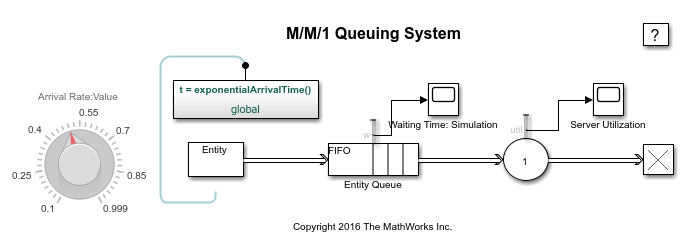simevents
Open SimEvents library
Syntax
Description
simevents opens the main SimEvents® library.
SimEvents integrates discrete-event system modeling into the Simulink® time-based framework. In time-based systems, a signal changes value in response to the simulation clock, and state updates occur synchronously with time. In discrete-event or event-based systems, state transitions depend on asynchronous discrete incidents called events.
SimEvents provides a discrete-event simulation engine and component library for analyzing event-driven system models and optimizing performance characteristics such as latency, throughput, and packet loss. Queues, servers, switches, and other predefined blocks enable you to model routing, processing delays, and prioritization for scheduling and communication.
In SimEvents:
Entity — A discrete item or object of interest based on the application domain. For example an entity can represent vehicles arriving at a gas station, messages within a communication network, planes on a runway, or trains within a signaling system.
Event — Asynchronous discrete incidents. For example, an event can represent an entity entry to a block or entity departure from a block.
Event Action — A custom action invoked by an event. You can customize event actions using MATLAB® code that performs calculations and Simulink function calls.
SimEvents blocks can produce, process, and route entities. The blocks can also attach data to entities and manipulate entity data using event actions.
Examples
Version History
Introduced in R2011b

